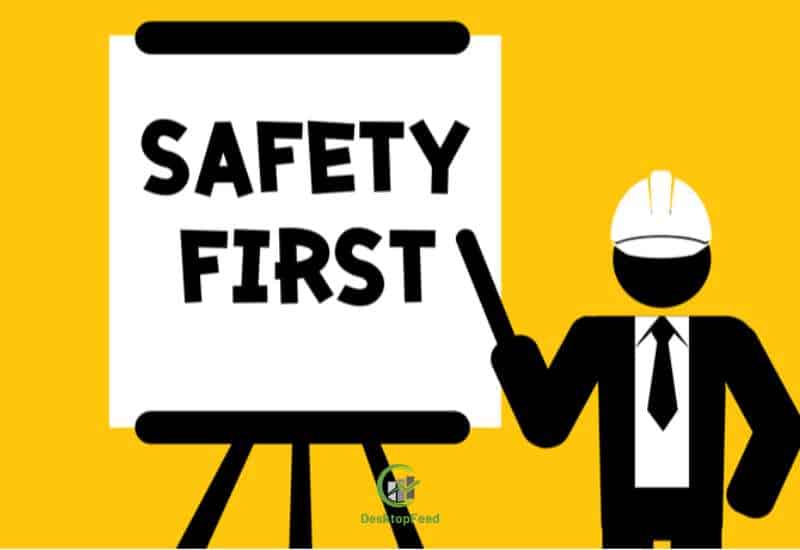Ways to Improve Your Workplace Safety

As an employer, you can take steps to improve your workplace safety. To do so, you need to clarify that safety is a priority, empower workers to speak up and educate new employees. In this article, we will provide 10 ways you can make your workplace safer. These tips will help you avoid workplace injuries and other incidents.
10 ways to improve workplace safety
Creating a safe work environment starts with defining and following clear safety goals. This can be done by creating safety policies and training employees. This way, everyone knows what is expected of them. It’s also important to remember that attitude influences behavior. When workers see that their bosses and colleagues are dedicated to improving the workplace, they’ll be more likely to follow suit.
Employees must feel that safety is their primary responsibility. Make sure to include safety in job descriptions and performance evaluations. Also, make sure to reward employees who contribute to a safe workplace. Lastly, review inspection reports and understand OSHA regulations. Hiring a safety consultant to help you create a workplace safety plan can be a great help.
Employers have a moral and legal responsibility to provide a safe workplace for their workers. Investing in workplace safety training will help you avoid costly accidents and injuries. One study from the Institute for Work & Health shows that employees with less than a month of experience have a three-fold risk of experiencing lost-time injuries than those who have been in the same job for years.
When employees report a safety concern, do not ignore it or punish them. If you respond negatively to the employee, it will discourage others from reporting safety concerns. It’s important to acknowledge both good and bad examples because people learn from both. You should also encourage your workers to debrief incidents and audit situations to help them improve.
Clarify that safety is a priority
When it comes to improving workplace safety, it’s crucial to clarify that everyone’s safety is a priority. No employee should be deemed “too important” or “non-important” for the safety of the workplace. Rather, every employee should feel personally responsible for their own safety and be held accountable for their actions.
It’s also important to establish a culture that reflects safety values. This means embracing the ideas of employees and incorporating them into job descriptions, performance evaluations, and other company policies. The more employees are involved, the more safety is likely to become an inherent part of the work environment.
Establishing a proactive safety culture is crucial for increasing workplace safety standards and preventing complacency. Safety is everyone’s responsibility, and employees should be encouraged to follow guidelines and practices by setting up a safety committee to hold managers and employees accountable. You can also consider making workplace safety inspections a part of some employees’ jobs, or keeping them informed about workplace safety issues.
In addition to education, workplace safety training should also be regularly conducted for all personnel. Safety training should be ongoing, and should cover the various hazards that come with the job. Employees should also be given the opportunity to discuss and learn from each other’s experiences.
Encourage workers to speak up
If you are concerned about the safety of your workers, you should encourage them to speak up. In order to do so, you need to provide them with a safe and welcoming environment. It is also important to allow them to voice their concerns without fear of being judged or punished. By encouraging workers to raise concerns and report hazards, you will build their confidence and help your organization make better decisions.
When asking employees to voice their concerns, make sure they are specific and factual. Also, try to provide solid reasons for the problem and suggest possible solutions. Avoid focusing on how the concern was handled in the past. The actions taken today will make a big difference in the future.
Having a culture of safety is important in all companies, regardless of size. While employers of any size face challenges when it comes to keeping track of safety problems, they can make progress by encouraging their workers to speak up. Investing in open communication and training employees to recognize hazards will go a long way in improving the safety culture at your workplace.
Employees who are willing to report incidents should receive a reward instead of retaliation. Employees should also be able to feel proud of speaking up about their experiences, which will build a culture of trust and open communication.
Educate new employees
It’s critical to include workplace safety protocols in your new employee orientation. Training should include information about emergency exits and fire extinguishers. Make sure that new employees know how to access them and how to report unsafe work situations. Educating new employees on workplace safety can prevent costly miscommunications down the line.
Regardless of your industry, workplace safety training is essential. Training programs should cover workplace safety best practices and the latest trends. These programs should involve employees and recognize individuals who promote workplace safety. In addition, they should include protocols for reporting incidents and injuries. One training session cannot prepare employees for the rigors of workplace safety.
Employee safety training must include classroom lectures, hands-on training, and supervision. You should also offer refresher training when necessary. New employees should receive a safety onboarding checklist before starting work. This checklist will help you ensure that your employees are aware of the rules and regulations of the workplace and are aware of potential hazards.
Educating new employees on workplace safety protocol should be fun, informative, and informative. The training should be provided in a way that encourages employees to participate in the discussion and ask questions. In addition, it’s important for managers to encourage employees to discuss any safety concerns they may have. A culture of workplace safety can enhance employees’ morale and productivity.
Organize workplace areas
One way to improve workplace safety is to eliminate clutter. This can be done by reorganizing areas in the workplace and designating a specific area for each item. This can minimize the risk of injury and increase productivity. It can also improve the look of your workspace. Listed below are a few tips to organize your workspace safely.
A messy workplace is a prime candidate for injury. Tidiness and regular inspections are essential to avoid accidents. Make sure to untangle cords and clean walkways of tripping hazards. Also, make sure that items are not stacked in such a way that they can topple over.
When organizing workspaces, remember that safety is the most important factor. When employees feel secure, they will be more productive and happy. A well-organized workspace will be more efficient. This will encourage better work from workers, and it will also boost the productivity of the organization. Organizing workplace areas correctly can reduce the risk of injury and increase the quality of your work.
The leadership of an organization must be committed to workplace safety. This commitment should begin at the top, and should trickle down to all levels of the organization. When employees believe in a safety culture, they will be more likely to report any accidents or injuries that occur in the workplace.
Invest in personal protective equipment
Investing in personal protective equipment (PPE) is an important way to make sure that your workers are safe. Without the right equipment, a worker could suffer an injury or illness that could lead to lost time and staff turnover. Not only that, but an unsafe working environment can negatively affect the bottom line of a business. Health and safety regulations in the UK require employers to provide suitable PPE to their employees. If they fail to do so, they could face huge compensation payments.
When you invest in safety, you improve employee morale and retention. Happy employees are more productive and stay at work longer. By improving the safety of your workplace, you can reduce absenteeism, reduce employee turnover, and increase profitability. The investment will pay for itself in the long run.
Accidents and illnesses in the workplace cost businesses millions of dollars each year. They also cause thousands of hours of lost productivity. However, most of these injuries and illnesses are preventable. All it takes is a committed safety culture to prevent these occurrences. To do this, employees need to be properly equipped with PPE and trained in its use. Furthermore, investing in safety equipment will lower the overall costs of running a business.
The type of PPE is also important. If it is not fit properly, it won’t be effective for the employee and could result in an injury. To avoid this, employees should wear the right PPE according to their height, body, and weight. If multiple employees must wear different types of PPE, the equipment should be compatible. The American National Standards Institute (ANSI) has established engineering standards to help employers decide which PPE to purchase.
For More Articles: Desktopfeed.com






